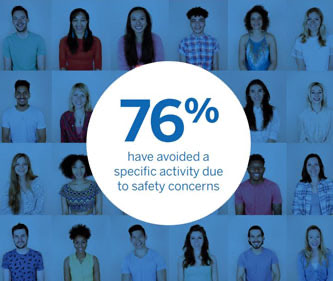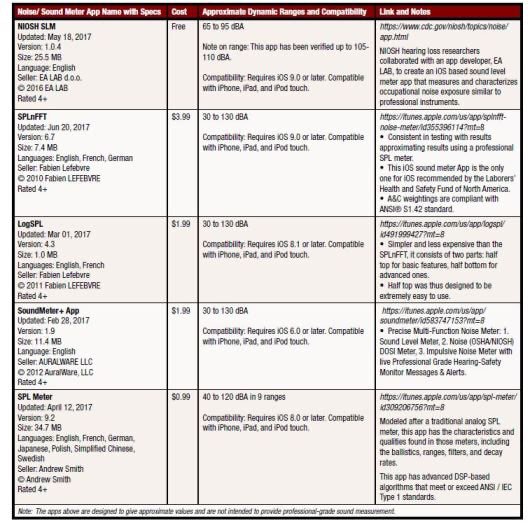Millennials Trust Technology to Keep Them Safe
- Resources
- Industrial Safety Blog

Image: Campus Safety Magazine
FUN FACT: 76% of Millennials have avoided a specific activity due to safety concerns.
Noise Induced Hearing Loss (NIHL) "is the most common, permanent, and preventable occupational injury in the world." Because Millennials are now the largest generation in the U.S. labor force, having surpassed Baby Boomers and Gen Xers, how can we motivate them to protect their hearing at work and in their personal lives?
Most safety managers are familiar with the primary methods to help prevent hearing loss, including education, engineering and administration controls, "buy quiet" practices, and the use of hearing protection devices (HPDs), such as foam ear plugs and ear muffs.
However, with Millennials, there is another tool which can be helpful—technology and the evolving smart phone apps that help measure sound. After all, Millennials have grown up on technology and respond positively to it. They are tech-savvy, well educated, and they love a good smart phone app.
How can you tell when a noise is unhealthy for your ears? There's an app for that. Sound-level meter apps available for smart phones "can have a tremendous and far-reaching impact in the area of noise control," says CDC. The mobile nature of the smart phone makes it easy for Millennials to take control of their hearing health by downloading apps that measure the decibel level of sounds in the environment around them. CDC and NIOSH say the benefits of these apps include:
- Raise workers' awareness about their work environment
- Help workers make informed decisions about the potential hazards to their hearing
- Serve as a research tool to collect noise exposure data
- Promote better hearing health and prevention efforts
- Easy to use
Although many smart phone apps are very accurate, they should not be used for OSHA compliance purposes or professional-grade sound measurement. Instead, sound meter apps should be used as a tool to screen surrounding environments for noise pollution, including workplaces, gyms, concerts, power appliances, kitchen tools, loud moving vehicles, airports, etc. Smart phone apps are not intended to be used in diagnosis or treatment of any medical condition, nor are they intended to be used as legal evidence for workplace/merchandise safety.
However, the inexpensive cost, ease of use, and portability of smart phone apps can provide Millennials with an approximate value of noise levels to motivate them to use hearing protection devices, which include foam ear plugs, passive and electronic ear muffs, custom-molded ear plugs, banded protection, etc.
Below are five of the more professional rated apps in the marketplace. Remember, smart phone apps are not as accurate as a professional SPL noise meter, which can cost in the thousands of dollars. However, the affordable apps below, when used properly, can provide a good approximate value of the noise levels in your environment.
Five Noise/Sound Meter Apps for iPhone, iPad, and iPod touch

In 2014, the National Institute of Occupational Safety and Health (NIOSH) conducted a pilot study to determine which smart phone apps were the most reliable. The resulting paper, "Evaluation of Smartphone Sound Measurement Applications," was published in the Journal of the Acoustical Society of America. They studied both iOS and Android apps. For more in-depth scientific information about the most reliable. The resulting paper, "Evaluation of Smartphone Sound Measurement Applications," was published in the Journal of the Acoustical Society of America. They studied both iOS and Android apps. For more in-depth scientific information about the most reliable smart phone sound-level meter apps, visit http://asa.scitation.org/doi/full/10.1121/1.486526
Topics: Hearing Protection